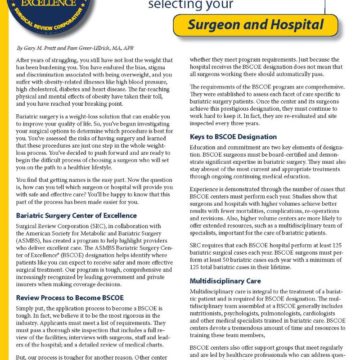Design Your Own Exercise Program


by Dorrie Wilson, BS, ACE-CPT
Winter 2010
DISCLAIMER: To develop an exercise program that best suits your needs, please consult with your physician. It is important to talk with your doctor before beginning any exercise program.
You have heard it before, regular physical activity is necessary for good health. It is primarily important for someone who is trying to lose weight or maintain a healthy weight to be physically active. Exercise cannot only help to control weight but it contributes to healthy bones, joints and muscles.
Finding What Works for You
Now that you have decided to start an exercise program, you may ask, where do I begin? First, make a plan. Planning is the key to being a weight manager. When you make your plan, set goals for yourself. Goals should be clear-cut and emphasize what you want to happen. Use the SMART goals to help get you started (see below to learn about SMART goals).
You do not have to go to a gym. Take the dog for a walk or get a pedometer and shoot to get 10 more steps each day. Buy a walking DVD so you can walk in the comfort of your own living room. Pool activity is a great way to move without too much pressure on your joints. Just remember to make your exercise program realistic. When you are developing your exercise program, make it as simple and convenient as possible for you and your fitness level.
Gauging the Intensity of Your Exercise Routine
Now that you have set your goals or maybe you have begun your exercise program, it is important to learn how your body reacts to movement. When just getting started you want to start out at a low to moderate intensity. If you are walking, start out walking at a comfortable pace. You do not want to hurt yourself, as it is extremely important not to over-do it in the beginning.
Examples of Exercise Intensity
Moderate Intensity Exercises
Walking briskly
Water aerobics
Bicycling slower than 10 miles per hour
Tennis (doubles)
Ballroom dancing
Vigorous Intensity
Race walking, jogging or running
Swimming laps
Tennis (singles)
Step aerobics
Bicycling 10 miles per hour or faster
Hiking up hill
How do you know how to gauge your exercise intensity?
There are a few ways. One being heart rate assessment, which is a commonly used method. For some, however, this method can be difficult to master, mostly during exercise. In addition, monitoring heart rate to manage exertion is inappropriate for individuals taking certain medications that affect exercise heart rate, such as beta-blockers for high blood pressure, and those with health conditions that affect heart rate.
One of the easiest ways to monitor your exercise intensity is to use the ratings of perceived exertion (RPE) scale. Whether you walk, swim, run, bicycle or do step aerobics, your exercise intensity should be within a range of comfort.
Perceived exertion is how hard you feel your body is working. It is based on the physical sensations a person experiences during physical activity, including increased heart rate, increased breathing rate, increased sweating and muscle fatigue. Paying attention to how you feel when you exercise is also a great way to get to know your body and all of its capabilities. By using RPE, you will learn to evaluate your internal comfort zone.
How do I use the RPE method?
During activity, use the scale of perceived exertion to assign numbers to how you feel. Self-monitoring how hard your body is working can help you adjust the intensity of the activity by speeding up or slowing down your movements.
Scale of Perceived Exertion
10 Point Scale
0 – Nothing at all (sitting on the couch)
1 – Very Light
2 – Fairly Light (comfortable, can maintain for long time, little effort)
3 – Moderate (still comfortable, but breathing harder)
4 – Somewhat hard (sweating, but can still carry on a conversation with little effort)
5 – Hard
6
7 – Very Hard
8
9
10 – Very, very hard
Perceived exertion is assessed by using a 0-10 chart to rate the feelings caused by your exertion. For example, sitting quietly in a chair would have a rating of 0. Walking at a pace that you feel is moderate might increase the rating to a 3. The rating of your exertion should be independent of the pace you think you are walking; it is entirely dependent on the feelings caused by the exertion, which means it is all relative to your own feelings.
You can increase your exercise intensity as you feel you are ready. It should be a natural progression as your body becomes more physically fit.
SMART goals help to evaluate if what you are trying to achieve is reachable. Use these goals to help in making your exercise program:
Make SMART Goals:
S = Specific
M = Measurable
A = Attainable
R = Realistic
T= Timely
Specific: Specifics will help you to focus on your efforts and clearly define what your plan is. What are you going to do? Why is it important to you? How are you going to do it?
Measurable: Establish tangible criteria for measuring progress toward the accomplishment of each goal you set. When you measure your progress you stay on track, reach your target dates and experience the excitement of achievement that motivates you.
Attainable: Setting goals too far out of reach will lead to not achieving them (i.e. saying you are going to go the gym for an hour everyday when you have not exercised in a long time might be too much to start with). Although you may start with the best of intentions, the knowledge that it is too much for you means your subconscious will keep reminding you of this fact and will stop you from giving it your best.
Realistic: Realistic means, “do-able.” A goal needs to be realistic for you and where you are at the moment. Do not make your goals so out of reach you set yourself up for failure. Set yourself up for success. If it sounds too easy then there’s no reason why you cannot or will not do it.
Timely: Putting an end point on your goal gives you a clear target to work toward. If you do not set a time, the commitment is too vague. It tends not to happen because you feel you can start at any time. Without a time limit, there is no urgency to start taking action now.
Conclusion
When designing your fitness plan, make it realistic for you and your fitness level. Only perform activities that are appropriate for you. Start with five minutes a day and progress as you are ready to.
It is important that when beginning an exercise program you establish the routine of the behavior and add time and intensity later. This is your body and your plan. Physical activity is extremely important for weight-loss, weight management and overall good health.
About the Author:
Dorrie Wilson, BS, ACE-CPT, is an Exercise Specialist Educator at Scottsdale Healthcare and Scottsdale Bariatric Center in Scottsdale, AZ.
by Yelena Kibasova Spring 2024 The fitness world is evolving, with new trends and innovations that promise…
Read Articleby Zack Lucks, NASM-CPT, EMT Winter 2024 Working out with a loved one is a great way…
Read Articleby Nina Crowley, PhD, RD (with Inspiration from Shawn Cochran) Winter 2024 Dating, no matter your age,…
Read Article









